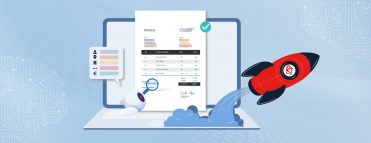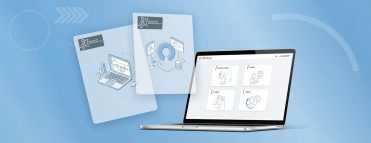Accessible documents are already mandatory in the public sector, but there is still a lot of work to do in this direction. The situation in the private sector is not different: companies continue to provide millions of non-accessible PDF documents via the Internet or use them in their customer communication. How can it be possible to make their content more accessible to people with disabilities? And how can this process be efficiently designed using intelligent software?
Making PDF documents accessible: an impossible task?
Companies such as banks and insurance companies are particularly document-intensive. They use the PDF format, among other things, to map their contracts, e-invoicing, forms and conditions.
These and many other documents are often not barrier-free. Their content is therefore difficult or impossible to access for people with visual impairments and motor impairments. They therefore use assistive technologies such as screen readers. However, screen readers need so-called tags that the user can control directly. These are elements such as headings, paragraphs, lists and tables. This is where the PDF/UA comes into play.
"UA” stands for Universal Accessibility. PDF documents that conform to this standard must have the aforementioned tags. If you want to implement inclusion consistently, you should bring all existing and new documents into PDF/UA format. However, converting and setting the tags for each file manually is not an option given the enormous amount of work involved. Even if the measure could be financed, there would not be enough qualified employees who could implement it. Fortunately, technology now exists to address this challenge.
PDF converter sets tags automatically
The PDF all-round editor CIB pdf breweris a free tool for professionals that can be used to create documents according to PDF/UA specifications, among many other features. CIB pdf brewer automatically inserts the required tags during conversion if the source document is formatted accordingly. CIB pdf brewer can be controlled directly from Microsoft Word or from other applications.
Anyone who consistently uses tools like CIB pdf brewer can ensure accessibility for newly added documents - but it also makes sense to store existing documents in an accessible format. Efficient PDF/UA-supporting PDF creators are an indispensable support - however, it takes some expertise to create flawless PDF/UA documents with them. However, when the PDF/UA creator reaches its limits, the Artificial Inelligence comes into play.
AI could also make existing documents accessible
Research area with great potential
Overall, it becomes clear that artificial intelligence has enormous potential with regard to the accessibility of documents. CIB recognized this early on and is conducting intensive research in several AI disciplines. A particularly relevant sub-area for accessibility is Natural Language Processing. In this area, the research projects not only deal with the automatic conversion of documents into barrier-free formats. The focus is also on topics such as determining language proficiency, determining language level (keyword: plain language), linguistic analyses, recognizing reading direction and order, and automatic alternative formulations. The comoany continuously incorporates the research results into the further development of its digitalization solutions – always with the aim of providing maximum support for the creation and understanding of documents.
Digital transformation is now! Are you interested in our AI and accessibility solutions? Contact us!






